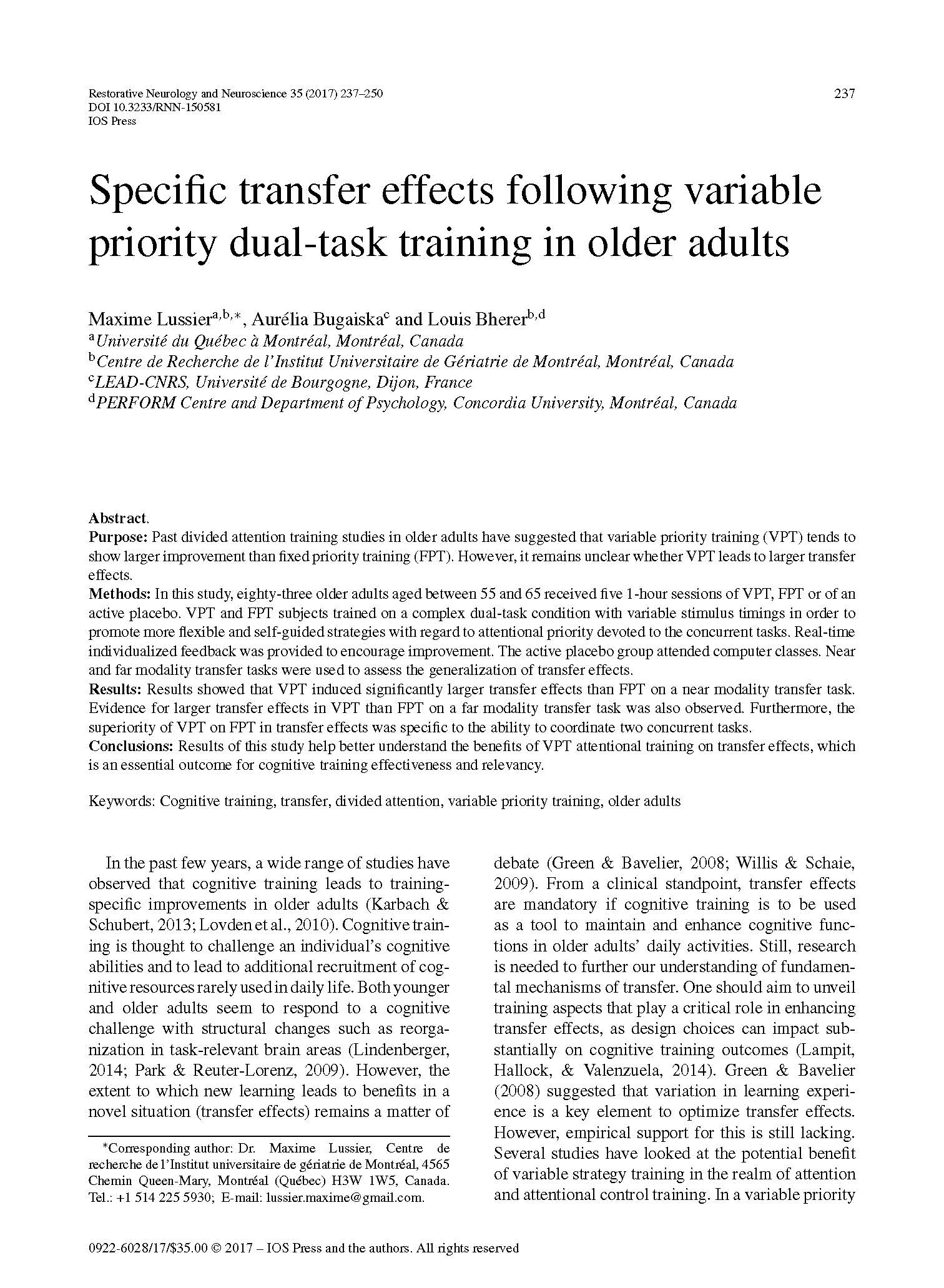Purpose: Past divided attention training studies in older adults have suggested that variable priority training (VPT) tends to show larger improvement than fixed priority training (FPT). However, it remains unclear whether VPT leads to larger transfer effects.
Methods: In this study, eighty-three older adults aged between 55 and 65 received five 1-hour sessions of VPT, FPT or of an active placebo. VPT and FPT subjects trained on a complex dual-task condition with variable stimulus timings in order to promote more flexible and self-guided strategies with regard to attentional priority devoted to the concurrent tasks. Real-time individualized feedback was provided to encourage improvement. The active placebo group attended computer classes. Near and far modality transfer tasks were used to assess the generalization of transfer effects.
Results: Results showed that VPT induced significantly larger transfer effects than FPT on a near modality transfer task. Evidence for larger transfer effects in VPT than FPT on a far modality transfer task was also observed. Furthermore, the superiority of VPT on FPT in transfer effects was specific to the ability to coordinate two concurrent tasks.
Conclusions: Results of this study help better understand the benefits of VPT attentional training on transfer effects, which is an essential outcome for cognitive training effectiveness and relevancy.
Specific transfer effects following variable priority dual-task training in older adults
